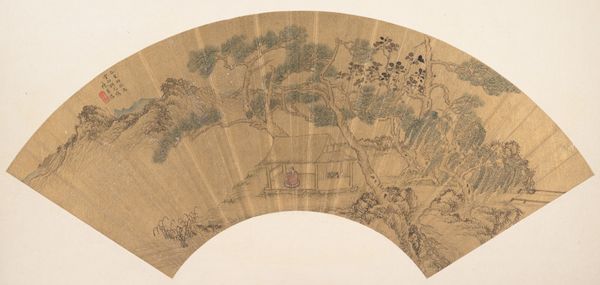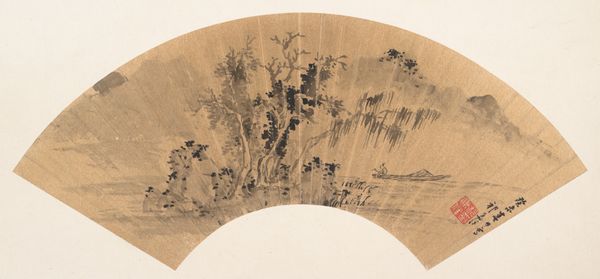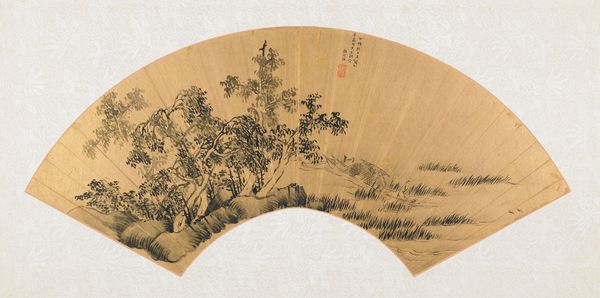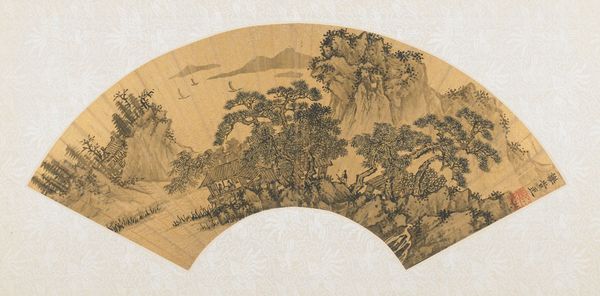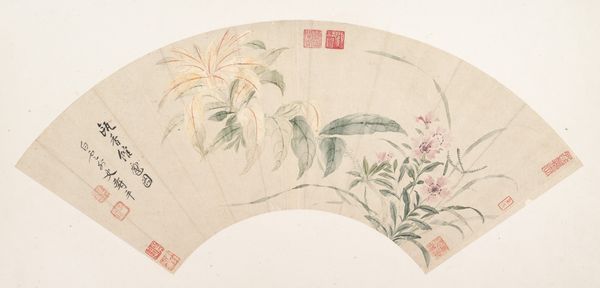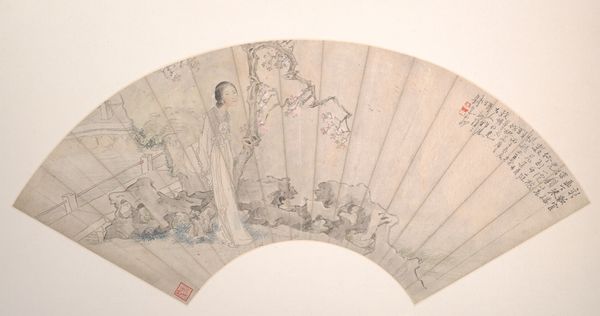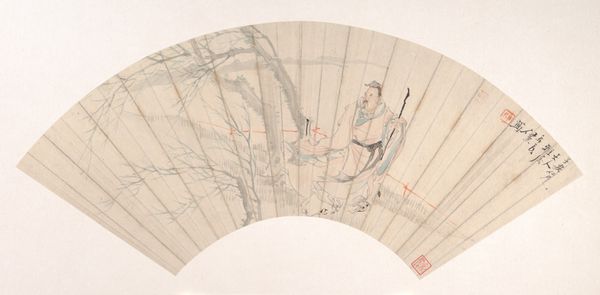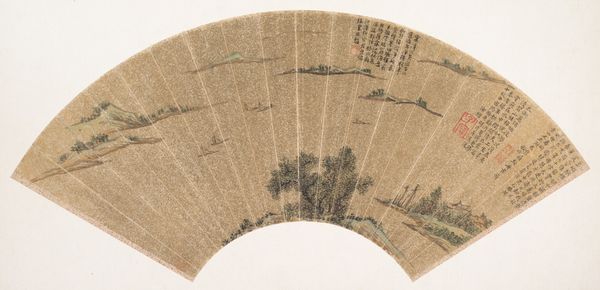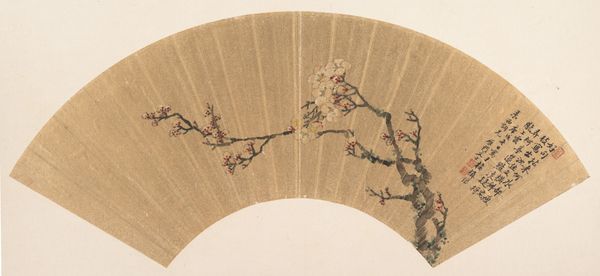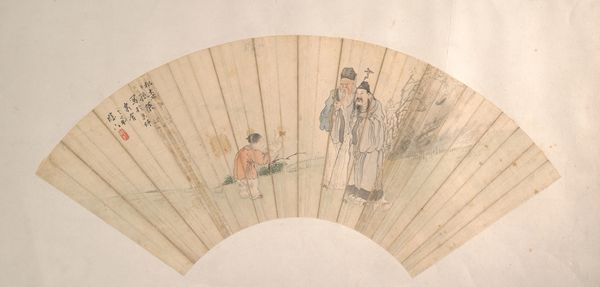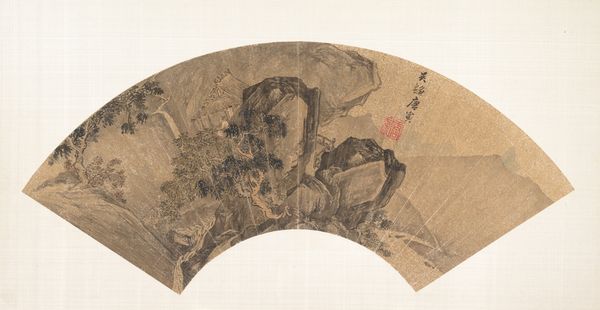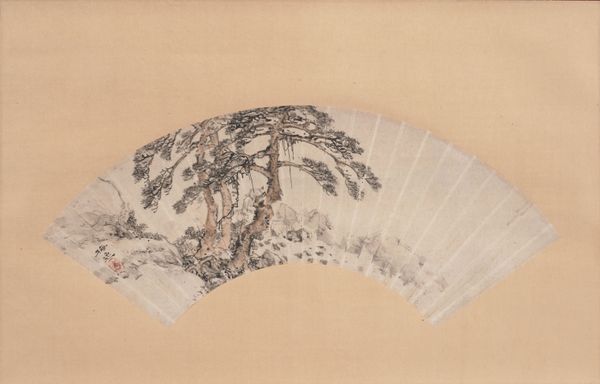
painting, paper, watercolor, ink
#
painting
#
asian-art
#
landscape
#
figuration
#
paper
#
watercolor
#
ink
#
orientalism
#
genre-painting
#
miniature
#
watercolor
Dimensions: 8 1/4 x 18 3/8 in. (20.96 x 46.67 cm) (fan)
Copyright: Public Domain
Editor: Here we have Wan Shouqi's "Fan Painting of a Daoist Magician," dating back to about 1650. It's an ink and watercolor on paper piece, currently residing here at the Minneapolis Institute of Art. The delicacy of the scene, the subtle coloring, makes me feel like I'm peering into a faded dream. What catches your eye when you look at this work? Curator: Ah, the transience of dreams perfectly captures it! The artist's sensitive brushstrokes create such a wonderfully ephemeral feeling. I immediately think of those quiet moments of contemplation we all crave. Don’t you feel as if we are intruding on a private journey? The way the artist uses the fan shape to frame the magician and the child really draws your focus inwards. Almost as if the world is blurring around them, as their world becomes clear for a brief, intimate moment. Editor: It's almost like a vignette, a little stolen scene. The composition really reinforces that. I was reading a bit about Daoism, and the connection to nature… is that relevant here? Curator: Absolutely! Daoism emphasizes harmony with nature, and this piece certainly reflects that. The magician is placed within this deliberately faded, dreamy landscape, and suggests a spiritual connection beyond the everyday. See how the flowing lines of his robe mirror the movement of the wind through the trees, it creates such a serene sense. It really gets me thinking… If we pause for just a moment to appreciate the little miracles happening around us all the time, what might we notice? Editor: I never considered the robes mirroring the trees - that really opens up a new perspective for me! I will certainly never look at Daoist landscapes the same way. Curator: And that's the beauty of art, isn't it? It invites us to see the world in new and unexpected ways!
Comments
minneapolisinstituteofart almost 2 years ago
⋮
Wan Shouqi was a poet, calligrapher, seal carver and painter from a family of high officials. He earned his juren degree in 1630 and published his first collection of poems three years later. An extreme Ming loyalist whose life was changed forever by the Manchu overthrow in 1644, Wan became a monk and retired from active life in 1646. Living quietly in Anhui province, he was forced to sell paintings and calligraphy for a living. Wan's figural paintings are relatively scarce. In this work, a Daoist magician stands on a bluff by a pond with a small boy at his side. The bamboo stick he throws into the air is being transformed into a dragon. This illustrates a story from Daoist lore about Fei Changfang, a minor official of the Han Dynasty, who studies the secrets of immortality with a Daoist master. The master gave Fei a stick of bamboo one day and told him to ride it. When Fei mounted the staff, he found he could travel great distances in an instant. When he tossed the stick over a pond, it turned into a blue dragon.
Join the conversation
Join millions of artists and users on Artera today and experience the ultimate creative platform.

